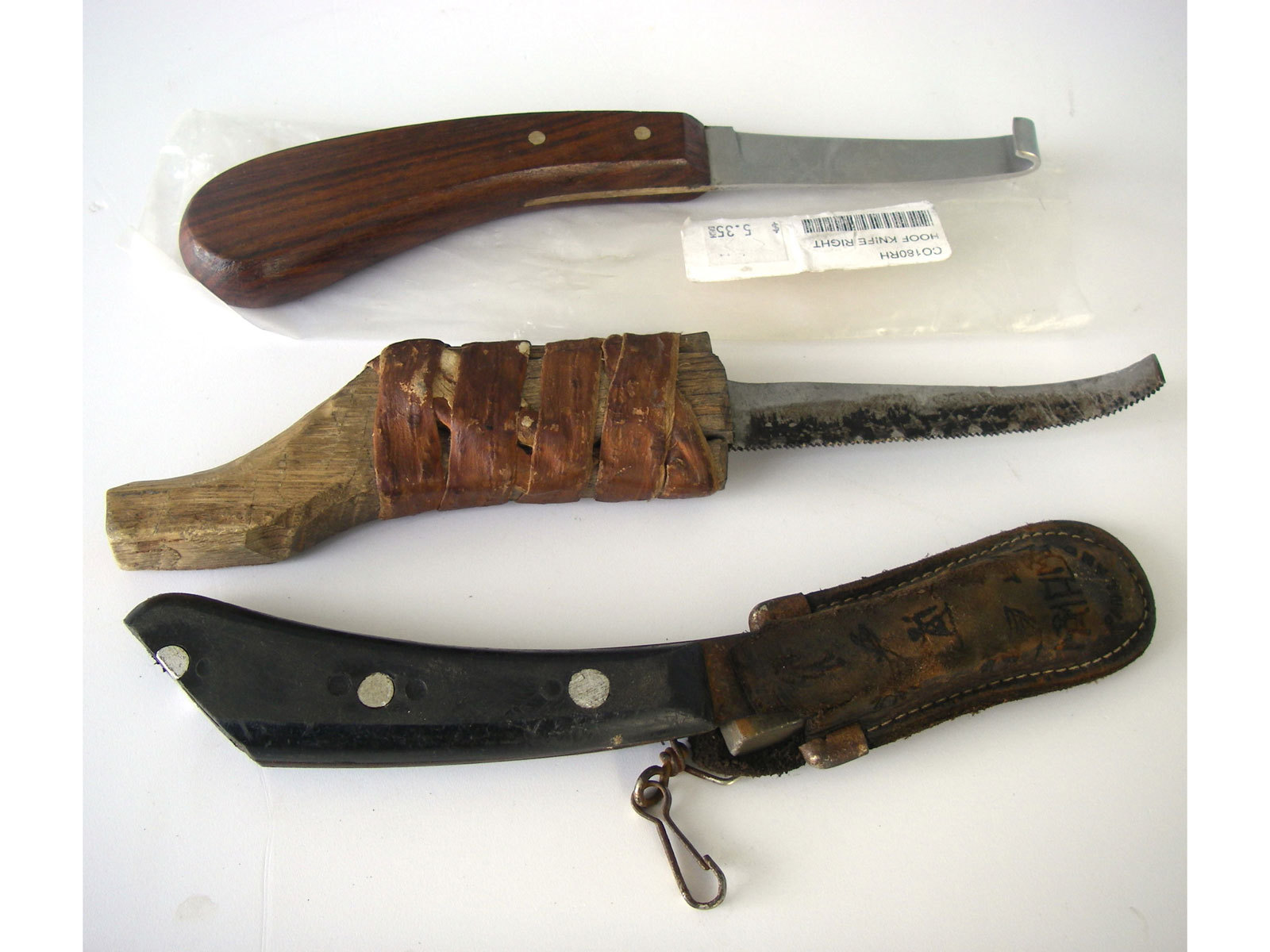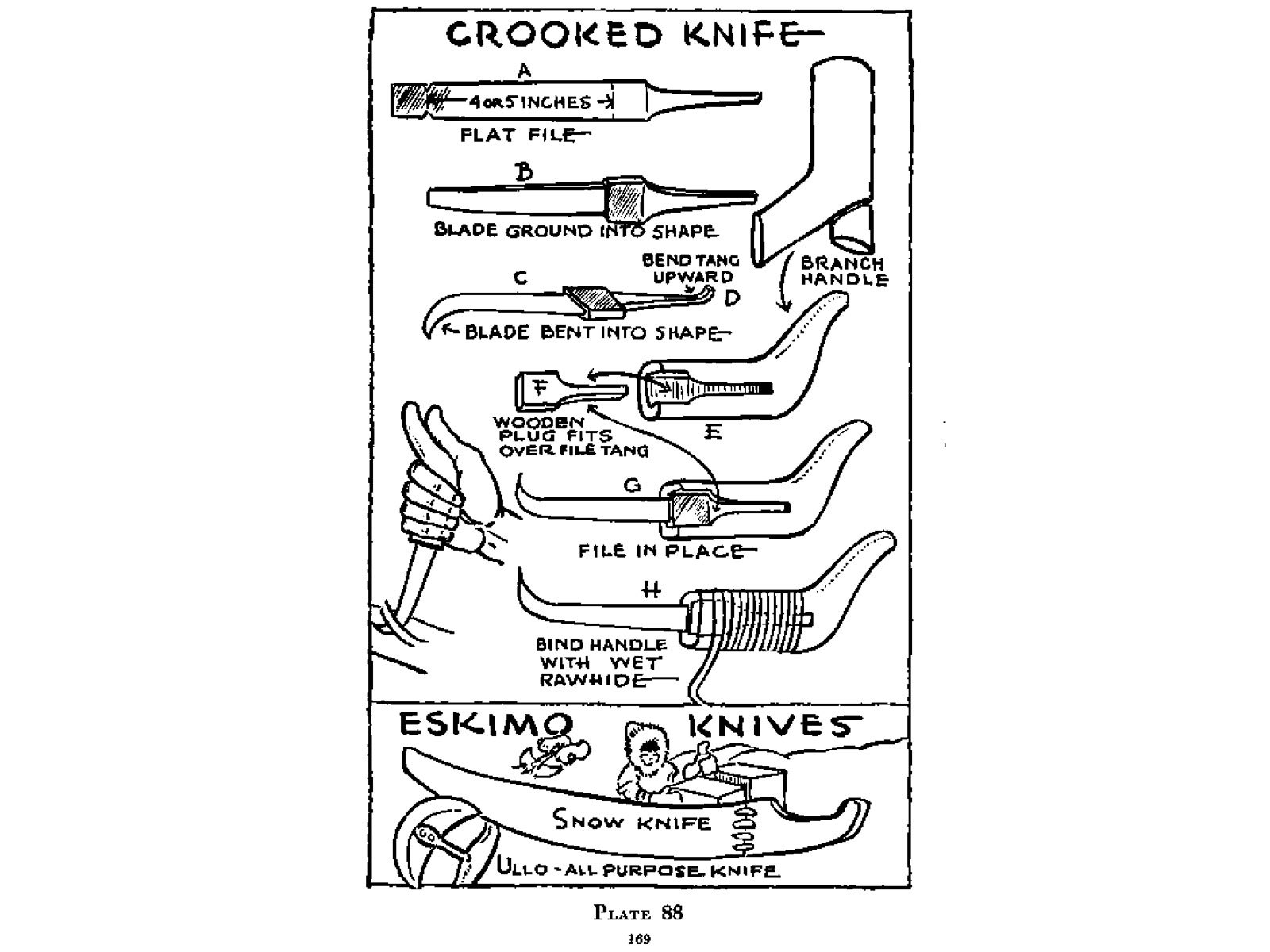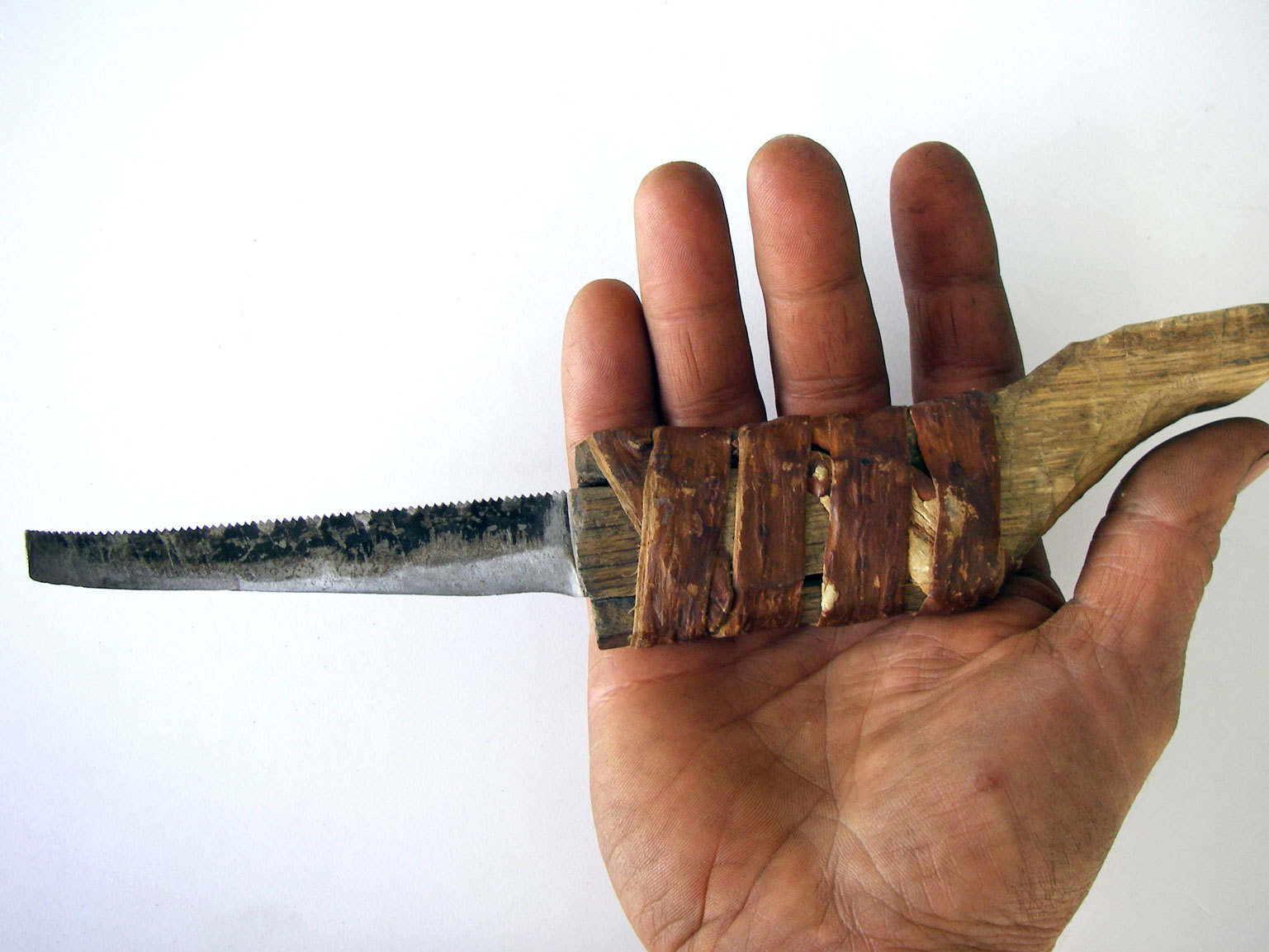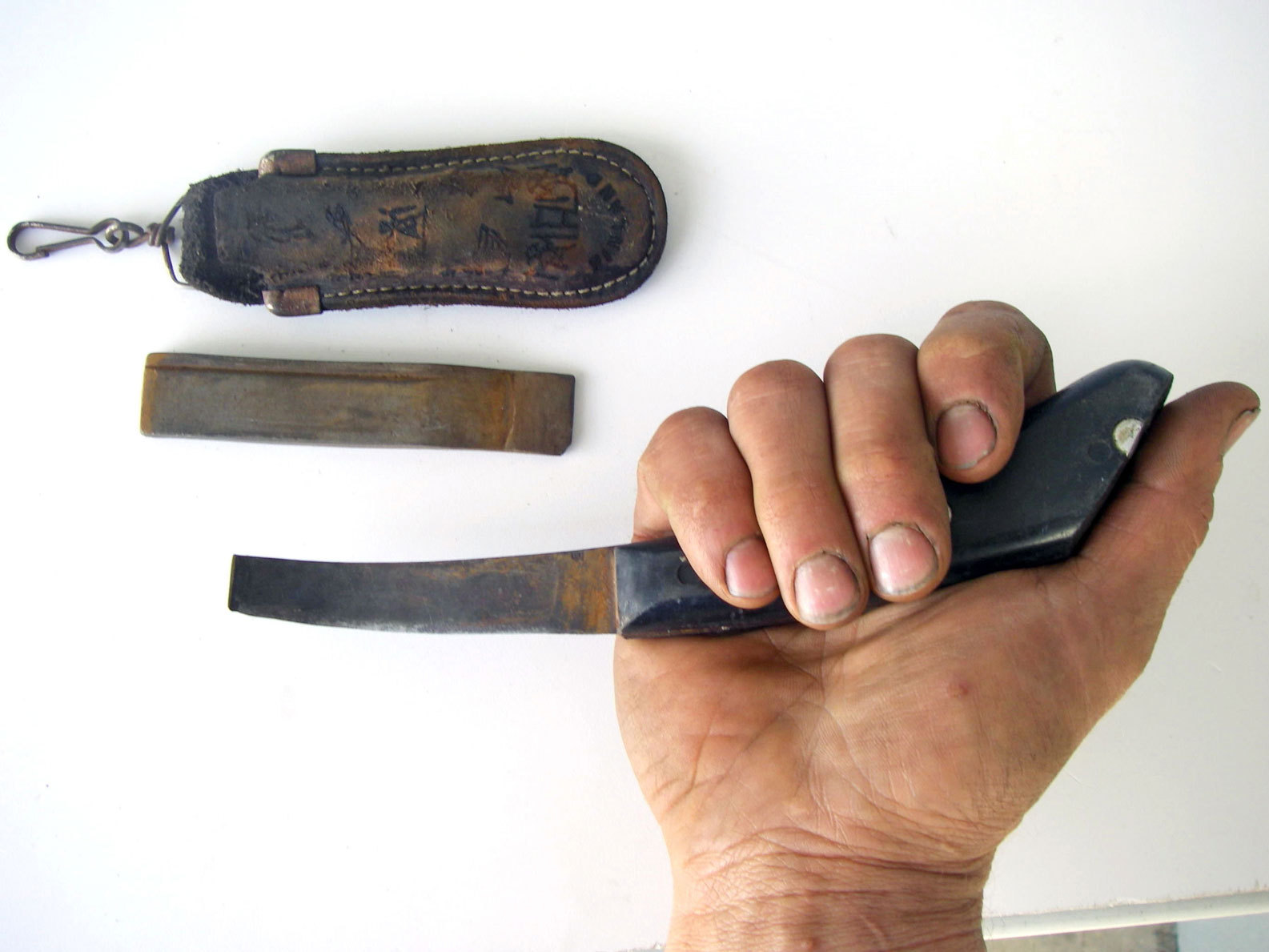The quickest way to make a crooked knife is to modify a hoof knife from a farm supply store. Some pet shops carry them with the horse equipment. The hoof knife tip is for cleaning a horse’s hoof. The tip fits into the contours around the “frog,” which is the living part of the underside of the hoof. For carving wood you don’t need that much of a bent tip.
Here’s how I modded a hoof knife into a crooked knife in about half an hour. I started with a sharpening stone in a leather sheath with Sami glyphs on it that a Finnish friend gave to me. It works perfectly as a sheath for the crooked knife with the blade next to the stone.
I bought an unmodified hoof knife for $5.35 from a feed store. It was made in Pakistan and has a stainless steel blade. Non-stainless is usually better. A blade that can rust is usually much better steel.
Cut off the end of the handle so it feels better on your thumb. Be aware that hoof knives come in right-handed and left-handed versions. Get the correct kind for you.
Straighten the blade to suit yourself. Photo 2 shows a finished knife (bottom) next to a stock one (top) for comparison.
Suit the bend to the work you’re doing. The knives used for finishing cedar canoe planks are mostly straight with a slight bend in the tip. The Salmon people use a crooked knife with a very long handle and a very small bent blade. They use it for carving details on totem poles, among other things.











